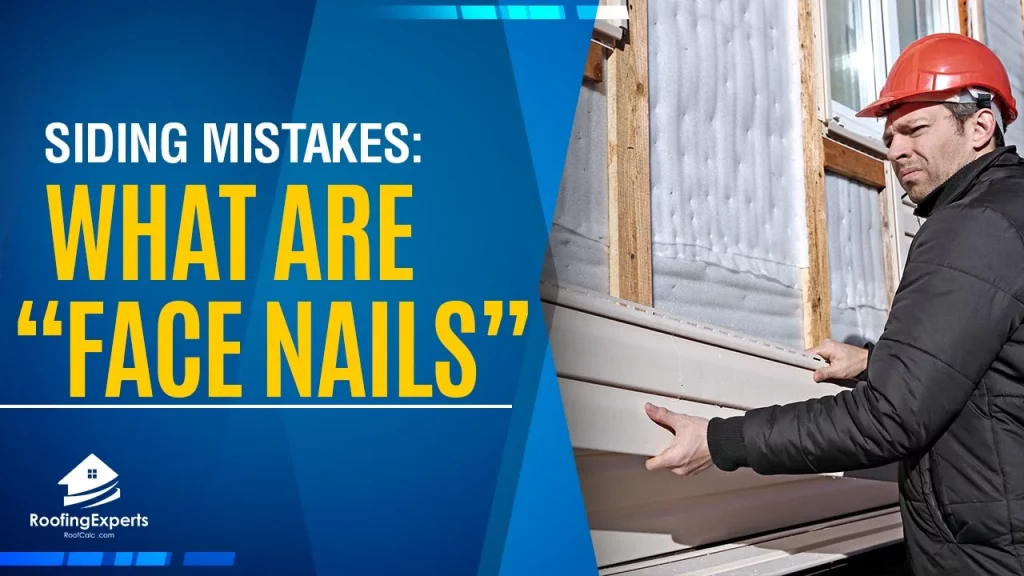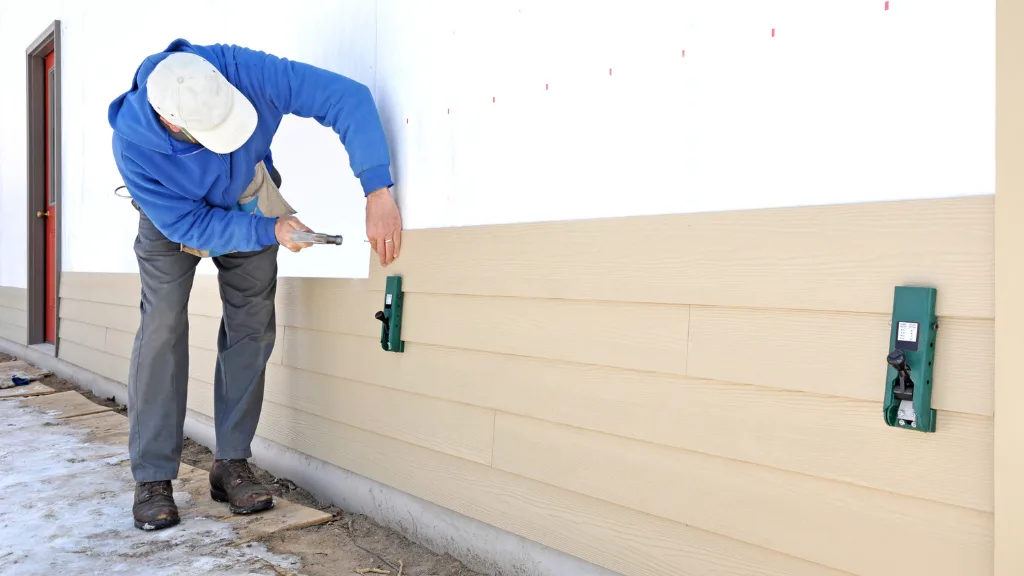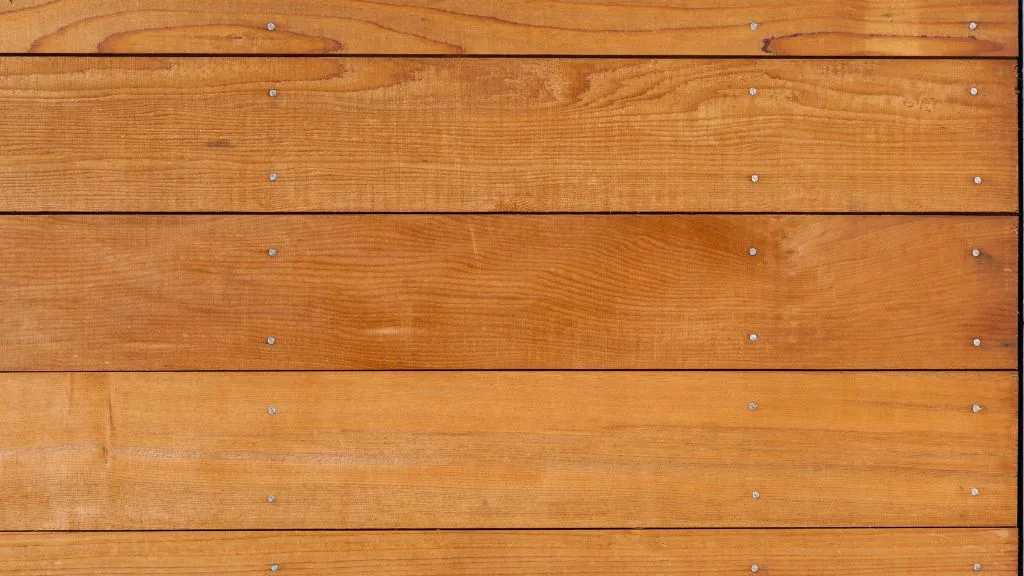
What are “face nails”? What is their purpose? This blog post will explore the history and modern day use of this building structure, as well as highlighting some common mistakes that people make when designing them.
What are Face Nails?
Face nails are a type of nail specifically designed to attach certain types of siding. When attached correctly, they will overlap and secure the lower layer into place securely on both sides.
This overlapping will prevent rain and other elements from getting under the siding. While they are most often associated with vinyl siding, face nails can be used on a variety of different types.
In the past, these were typically made from galvanized steel and had an extremely sharp point which would allow it to penetrate both layers of siding.
In modern days however, there is now a special type of nail that was designed for this specific purpose and is not as sharp.
These special nails are still made from galvanized steel, but they have a more pointed tip which allows for easy penetration of the upper layer of siding while preventing it from going all the way through to the lower layer where it could cause problems in attaching that piece securely.
What Are Some Common Face Nail Mistakes?
1. One of the most common mistakes people make when installing face nails is to hit them with too much force which causes it to go completely through both layers of siding.
While this can be fixed by using a special tool that allows you to remove the head, if done incorrectly it could cause even more damage than just leaving it.
2. Another common mistake is to use the wrong type of nail.
While galvanized steel will work, there are special nails specifically designed for this purpose that have a sharper tip and will prevent it from going through both layers of siding.
As you can imagine, if done incorrectly these mistakes could cause some serious damage in addition to being an eyesore and a waste of time.
While these mistakes can be easily avoided and corrected, it is still important to make sure you use the proper type of nails for this purpose.
Not only will they ensure that your vinyl siding stays in place securely and resist rain damage well but also prevent any other possible issues like rot or mold from getting into places where it should not.

Dealing with the Face Nails Problem
Because many types of siding are intended to be fastened before the next overlapping board is put up, the nails only penetrate one board rather than two. One of the most challenging aspects about doing face nails is that they might be a lot of trouble – here are a few reasons why.
1. Challenges with replacing your damaged board – replacing one board affects the other because there are face nails in each of them.
2. Dealing with moisture and leakage – Is it possible that the leakage has progressed into the insulation behind the rows of boards, making it more difficult to repair?
When installing wallboard over existing wallboard, nailing directly through the layer without nail-punching makes it simpler for leaks to form behind the row of boards – leaks that are tough to remedy.
3. Nailing at the wrong spots – It may be difficult to get the correct alignment for solid nailers. Certain types of boards are intended to be installed in specific locations. If you drive a nail into the wrong corner, the board can be crushed or splintered.
4. Issues with warranty – Repairs to face-nailed boards are typically not carried out by professional contractors. It’s possible that this type of nailing will void warranties.
They might try to persuade you that the whole thing should be replaced, but they will avoid any minor repairs, so you’ll have to handle it.
5. You nailed it too hard! – It’s tempting to drive the nail all the way into the material when nailing on a face.
This is an avoidable problem with these boards since many are intended to be fastened only lightly in contact with the substrate. Over time, the board becomes brittle and splintered due to deep nailing.
What are Benefits and Drawbacks of Using Siding Face Nails?
There are both benefits and drawbacks to using siding face nails for your exterior siding.
Benefits of Using Siding Face Nails
- One benefit of using siding face nails is that it attaches the boards of wood siding together.
- Another benefit of using siding face nails is that they are very quick and easy to use, which makes them ideal for people who don’t have a lot of time to put new boards of siding onto their houses.
Drawbacks of Using Siding Face Nails
However, there are also drawbacks to using siding face nails that you need to know about before you purchase your materials and begin working on your house exterior.
- One drawback is that the boards may come loose over time, especially if it has been raining out often.
- Another drawback of using siding face nails is that they are not very durable.
- And if they come loose, then it will be necessary for you to go out and purchase replacement materials.
What are Other Uses of Face Nails Aside from Siding?
Face nails, also commonly referred to as “siding nails” or “siding screws,” are a type of nail that is used for siding purposes.
It is a basic construction staple and can be purchased from any hardware store. There are many other uses for face nails aside from attaching siding.
What are other uses for face nails?
Many other construction projects require the use of a special type of nail, known as a “face” nail.
These fasteners have a large head at one end and a blunt point at the top. The thick, flat portion of its head is called the anvil while the narrow rod protruding from the top is the shank. The head usually has two grooves for better grip.
Where are other uses for face nails used?
Face nails are most commonly known as “siding” nails but they have a wide range of uses. They can be seen in many different construction projects including:
- “Decking,” where they are used to attach boards together
- “Trussing,” where they are used to hold trusses in place during assembly
- “Sheathing,” where they are used to hold plywood or boards together before applying siding
- “Rafters,” where they are used to affix rafter beams into place for roofing projects
- “Post and pier,” where they hold posts in place during construction
- They can also be used to attach other types of materials to one another such as “lath,” which is a metal or wood strip to which plaster is applied.
Where are face nails inserted?
Face nails may be inserted by hand but for such heavy-duty work, a pneumatic or electric powered hammer is recommended.
Another option is a powder-actuated tool which essentially shoots the nail into place. This is known as “powder actuated fastening.”
Final Thoughts
In summary, face nails are a common type of construction nail that have many uses. They can be purchased from any hardware store and come in various lengths and gauges. They are common in the siding industry but have many other uses.


